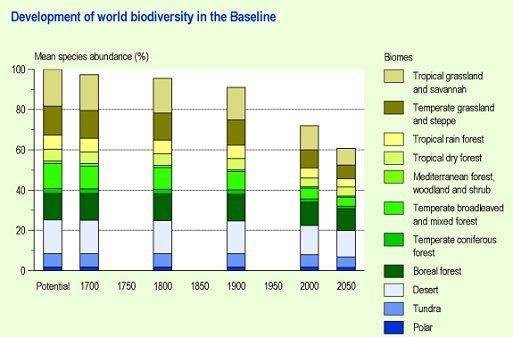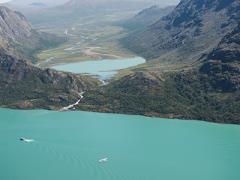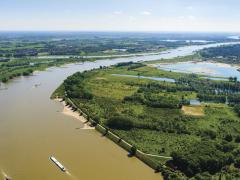Cost of Policy Inaction on Biodiversity
The 2010 targets for biodiversity will not be reached under continuation of the present biodiversity policies. The absence of additional biodiversity policies could come at a considerable price, sometime in the future. That is because natural systems will no longer be able to supply valuable services, such as carbon storage in forests and the supply of sufficient amounts of clean freshwater. In short, this is the outcome of a research programme, carried out by a consortium of institutes led by Leon Braat from Alterra. The study was performed at the request of the European Commission, and the first results were presented on 29th May at the 9th Meeting of the Conference of the Parties (COP9) to the Convention on Biological Diversity, in Bonn.
Biodiversity loss translated into a loss of goods and services delivered by ecosystems
The Netherlands Environmental Assessment Agency (PBL) has contributed to this research by delivering a global baseline scenario under continuation of present policies (derived from the OECD Environmental Outlook). Furthermore, PBL performed calculations for developments in terrestrial biodiversity. The calculations show that biodiversity loss is likely to continue over the coming decades, especially in savannah and steppe, but also in tropical and boreal forests. By 2050, the remaining biodiversity will be mainly located in deserts, the polar regions and boreal forests of Russia and Canada. Other partners in the consortium have translated the biodiversity loss into a loss of goods and services delivered by ecosystems, also indicating what this loss could be worth. This part of the study is in line with the analysis framework of the Millennium Ecosystem Assessment of 2005, that focused on the benefits of well developed ecosystems for human well-being. The PBL supports the conclusion that the ongoing biodiversity loss could present a large problem, over the coming decades.

Study initiated by the European Commission
The presented results are part of a series of studies, with which the European Commission intends to strategically focus its biodiversity policy. This intention is a reaction to the call by the G8 meeting during the German Chair in Potsdam (Spring 2007), for a 'Stern-like report on biodiversity'. This call was inspired by the STERN review (The Economics of Climate Change), in which the costs of failing climate change policies were studied. The STERN review contributed to the global sense of urgency to deal with the climate change problem. The planned studies are conveniently called 'The Economics of Ecosystems and Biodiversity (TEEB)'. The currently presented results are part of the first of these studies, namely 'The Cost of Policy Inaction: The case of not meeting the 2010 biodiversity target'.
What is meant by "Cost of Policy Inaction'?
The method of analysing the Cost of Policy Inaction (COPI) is different from carrying out a cost-benefit analysis, where gains and losses of different policy options are balanced. The present research tries to show the natural losses due to unchanged policies, and the associated value of these losses. The method is meant to indicate the urgency of a problem (giving a wake-up call). It is only a means to an end, and demonstrating that the loss could be even much worse has, therefore, no priority.
Main results of the 'Cost of Policy Inaction on Biodiversity'
- Biodiversity loss remains a global and persistent problem. The CBD targets for 2010 will probably not be achieved. The loss rate of terrestrial biodiversity is comparable with that of the last century (see Figure 1). If the loss was concentrated in one continuous area, then by 2050, it would represent the loss of all biodiversity in an area 1.3 times the size of the United States.
- The loss in goods and services, related to the biodiversity loss, may be substantial. This applies, for instance, to carbon storage in forests and wetlands, to the supply of clean and sufficient freshwater, and the opportunities for recreation and tourism. A first, very coarse estimate shows this loss to be around 7% of the Gross World Product (GWP), by 2050.
Which necessary steps need to be taken?
It would be useful to further analyse how much society would be willing to pay to prevent this loss in goods and services. Moreover, the benefits and burdens of biodiversity loss are unevenly distributed among the world population. It is, therefore, necessary to have a clear understanding of which groups and sectors will carry the burden and risks related to biodiversity loss and which groups will enjoy the benefits. Policy proposals are needed that can effectively halt further biodiversity loss, considering the temptations and stimuli that have lead to this loss. It is up to the European Commission to specify the policy portfolios that are responsible for the 'Inaction'.
Related PBL work
The contribution of the Netherlands Environmental Assessment Agency (PBL) was built on previous work, namely:
- The scenario analyses for the OECD Environmental Outlook to 2030 using the IMAGE and GLOBIO models.
- A scoping study for the European Commission, exploring the possibilities of applying the COPI method to environmental issues (at EU DG Environment).
- Scenario and model studies on policy packages to halt the loss of biodiversity, conducted for the Secretariat to the Convention on Biological Diversity (sCBD).
Relevant links
Specifications
- Publication title
- Cost of Policy Inaction on Biodiversity
- Publication date
- 29 May 2008
- Publication type
- Publication
- Product number
- 92262




